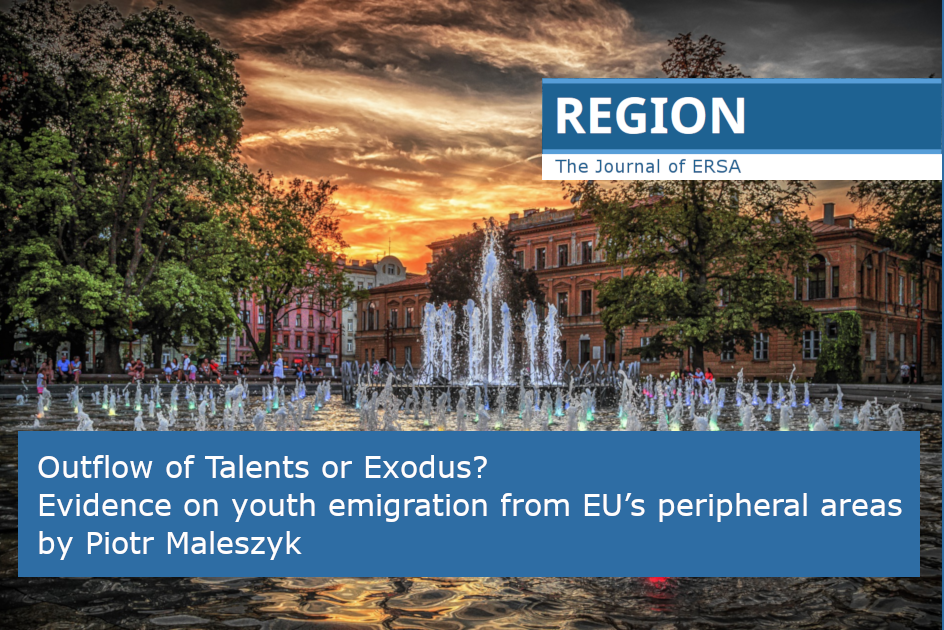Outflow of Talents or Exodus? Evidence on youth emigration from EU’s peripheral areas
DOI:
https://doi.org/10.18335/region.v8i1.283Abstract
Human-capital migration and its consequences for regional development are among the central issues discussed in migration and regional literature, while a growing interest has been recently observed in student migration as a driver of brain exchange between regions and countries. Furthermore, poor sending areas are often considered to be severely affected by the brain drain. Nevertheless, firm empirical evidence on the degree of the human-capital selectivity of youth migration is actually scarce due to measurement and methodological limitations.
This paper sheds some light on human-capital redistribution across regions and countries by estimating the intensity and human-capital selectivity of youth emigration from poor and peripheral EU areas in Poland. A survey of 10 thousand secondary school graduates allowed an analysis of mobility patterns in relation to school-leaving exam results being a proxy for human capital, as well as to sex, type of school and former place of residence.
This study revealed, that roughly 20% of graduates leave their home region, although migration rates across the youth characteristics followed by the results of logit regression model confirm that migration outflows, and particularly interregional moves, are a highly selective phenomenon. With regard to international mobility, student migration is positively selected as well, but economic migration among graduates electing not to continue education turns out to be adversely selected. Overall, the brain drain on EU’s peripheral areas in Poland with respect to the emigration of secondary-school graduates should be regarded as a selective outflow of most talented graduates to the leading academic centres, rather than massive migration of all graduates.

Downloads
Published
How to Cite
Issue
Section
License
REGION is an open journal, and uses the standard Creative Commons license: Copyright We want authors to retain the maximum control over their work consistent with the first goal. For this reason, authors who publish in REGION will release their articles under the Creative Commons Attribution license. This license allows anyone to copy and distribute the article provided that appropriate attribution is given to REGION and the authors. For details of the rights authors grant users of their work, see the "human-readable summary" of the license, with a link to the full license. (Note that "you" refers to a user, not an author, in the summary.) Upon submission, the authors agree that the following three items are true: 1) The manuscript named above: a) represents valid work and neither it nor any other that I have written with substantially similar content has been published before in any form except as a preprint, b) is not concurrently submitted to another publication, and c) does not infringe anyone’s copyright. The Author(s) holds ERSA, WU, REGION, and the Editors of REGION harmless against all copyright claims. d) I have, or a coauthor has, had sufficient access to the data to verify the manuscript’s scientific integrity. 2) If asked, I will provide or fully cooperate in providing the data on which the manuscript is based so the editors or their assignees can examine it (where possible) 3) For papers with more than one author, I as the submitter have the permission of the coauthors to submit this work, and all authors agree that the corresponding author will be the main correspondent with the editorial office, and review the edited manuscript and proof. If there is only one author, I will be the corresponding author and agree to handle these responsibilities.




